The 2018 Jungle Jumparoo tested positive for 53,600 ppm Lead in its yellow-painted components (90 ppm Lead and up is unsafe for kids).
For those new to the Lead Safe Mama website:
Tamara Rubin is a multiple-federal-award-winning independent advocate for childhood Lead poisoning prevention and consumer goods safety, and a documentary filmmaker. She is also a mother of Lead-poisoned children (two of her four sons were acutely Lead-poisoned in 2005).
- Tamara owns and runs Lead Safe Mama, LLC — a unique community collaborative woman-owned small business for childhood Lead poisoning prevention and consumer goods safety.
- Since July 2022, the work of Lead Safe Mama, LLC has been responsible for six product recalls (FDA and CPSC).
- All test results reported on this website are science-based, accurate, and replicable.
- Please check out our press page to see some of the news coverage of our work, linked here.
Published on Tuesday, December 1, 2020
Updated Wednesday, December 2, 2020
Jungle Jumparoo, c. December 2018
When tested with an XRF instrument, the Jungle Jumaparoo (pictured here) tested positive for a high level of Lead on the yellow-painted metal components. The yellow-painted metal bar was the only component that tested positive for Lead (all components were tested) with the following readings (after repeated tests, each for a minimum of 60 seconds to confirm accuracy):
- Lead (Pb): 53,600 +/- 3,600 ppm
- Barium (Ba): 55,000 +/- 5,000 ppm
- Chromium (Cr): 32,000 +/- 3,800 ppm
- Tin (Sn): 122 +/- 50 ppm
- Negative for: Cadmium, Mercury, Antimony, and Selenium
How old is the Jumparoo that was tested? Where was it purchased? Are all Jungle Jumparoos positive for Lead in the yellow paint?
It is my understanding, from the family who owns this piece, that the toy pictured here was relatively recently purchased and purchased direct from the manufacturer via their website. UPDATE on December 2, 2020: I confirmed with the manufacturer today (Wednesday 12/2/2020) that the family purchased the toy new from them on December 10, 2018. I then discussed this with the family and they confirmed with me that this date sounded correct. (They had been unable to locate their receipt, so were initially not sure of the exact date that they purchased the toy.)
This product (the 2018-purchased Jungle Jumparoo example pictured in this article) is the only example of a toy like this (personal jungle gym-type toys from various brands and manufacturers) that I have tested that was positive for Lead in the paint. The owner of this piece was particularly upset that it tested positive for Lead because, prior to purchasing the product, she contacted the owner of the company that makes them to reconfirm that the product was Lead-free (per the advertising claims on their website).
I had the opportunity to test another one of these exact toys (a Jungle Jumparoo) later this Summer (early-September 2020) — and found it to be negative for Lead in all components (all colors). At the time (because that toy was negative), I did not make a note of the brand or manufacturer information, but in writing this article I did just reconfirm with the owner of that second example that it is in fact the same brand (Jungle Jumparoo) as the one pictured in this piece and that their new one (that was negative for Lead) was purchased more recently [they said they purchased it in “early-Summer”, 2020; I am waiting to hear back from her with the exact purchase date of this confirmed Lead-free version of the product].
Potentially a batch-specific problem
As a result of the above noted testing on two random samples of this product, which each had completely different test results, it is my educated guess that this is likely a batch-specific problem, and thus possibly not a problem for the whole production line or brand.
I will work on getting (and sharing with my readers) additional information related to the batch if possible [ideally a date range during which the items in the batch in question were sold] so that other Jungle Jumparoo owners can contact the company directly to confirm whether or not their similar product was made in the same batch and also potentially painted with Leaded yellow enamel paint.
How we would like the company to respond
I shared this article with the manufacturer (at the time of its initial publication on 12/1/2020), so officials are now fully aware of the concern. I have been communicating with the company back and forth much of the day today (12/2) and will publish an update soon with any company response that is helpful to those who own this product. Ideally, the manufacturer will do the following:
- Determine the date range of production for the batch in question (the sale date range for the production run that included items sold on or about 12/10/2018).
- Agree to issue a voluntary recall on the production run for the batch in question (with refunds and/or Lead-free replacement parts).
- Make a public statement on the concern (emailing it to all known customers and publishing it on their website) and conduct further testing to help determine if this is a problem with any other products, or only with a specific batch or version of the product (a specific date-range of manufacture), as sometimes happens.
- Establish more stringent protocols to ensure any future production runs of any of their products are all done with confirmed 100% Lead-free materials and coatings.
Quote from the Jungle Jumparoo website:
What are the company’s claims?
The company claims that the paint is “Lead-free” (see the screenshots from their website below). They also claim that the toys are appropriate for young children (ages 2 to 7 per the screenshot below.) They also have several quotes from customers on the website (including the one above) that encourage the user to believe and understand that it is safe for children and that it is intended to be used – daily – by children.
How much Lead is “too much” Lead?
United States federal regulations (via the Consumer Product Safety Improvement Act of 2008) require that – for an item to be deemed safe for a child to use and play with – the paint or coating (on any single component of the toy) be less than 90 parts per million Lead. The yellow painted components on this Jungle Jumperoo tested positive at more than 53,000 ppm Lead. 900 ppm Lead would be 10 times the limit. 9000 ppm Lead would be 100 times the limit. 53,600 ppm Lead is >595 times the limit – far, far beyond what would be considered legal – and safe for use by children. Exposure to even a tiny amount of Lead can cause permanent brain damage in young children (among other symptoms) — and frankly, in any sane society, toys intended for use by young children should not have any Lead at all! For information on symptoms of Lead exposure, click here.
Continue reading below the image (which shows a close up of paint chip missing from the yellow painted metal bar.)
Is this product likely to have caused harm to my child?
I am generally more concerned about potential harm to a child (caused by a newly-manufactured toy) if the surface of the paint of the item is at all worn or deteriorating. Given this is a fairly new product (I’m not sure how long they have been making them, but this was the first one I had seen, which – given the volume of consumer products I encounter in the course of my work – says something!) I think you can be fairly confident that if the paint is not deteriorating and chipping on one of these, it is not (yet) likely to have caused an elevated blood lead level in a specific child. The fact that it is an enamel powder coat on metal (vs. house paint on wood – for instance – or an oil based paint on some other substrate) also reinforces these considerations. These considerations do not mean you should not be concerned that the paint may be positive for Lead, owners should still be concerned about this and respond appropriately.
Potential for these products to chip or deteriorate
(creating leaded dust or ingestible particles.)
In spite of the above considerations (and the general durability of enamel paint on metal, especially for indoor use products) – as you can see from the image above – the Lead-positive example of the product that I tested did have a chip in the paint (there were several, in fact; that was just one I was able to capture with a photo). This product also has assembly joints in the painted tubing where the paint can rub and wear with the normal jumping on the product (see photo below) and I think over time it is very possible that (with normal wear and daily use – by a child in the age range intended for the product) this could present a very real potential source of harm for a child. The manufacturers of this product also explicitly state on their website that it can be used outdoors (in which case the enamel paint is much more likely to wear and deteriorate – potentially creating a significant hazard.)
Continue reading below the image, which is a picture of the join point where the paint may wear from friction with normal use.
What should I do if I own one of these Jungle Jumparoos?
- Stop using yours right away until you can determine if yours has Leaded enamel or not. As mentioned above, in an effort to help determine this, we are hoping this is a batch-isolated issue for the company, and that the manufacturer will determine which batch(es) had Lead, and they will either issue a recall, or refunds, or replacement parts for products in the impacted batches.
- Given such an extremely high level of Lead in the product I tested – especially if you have one that is deteriorating at all – it could not hurt to get your child’s blood Lead level tested right away. This is always a good thing to do regardless — even though it may seem unlikely that a toy like this (in new-condition) could be an immediate contributing source to a child’s elevated blood lead level (BLL). [Whenever there is possible harm caused by Lead exposure – in any scenario – having a current BLL, from the time period the child was possibly exposed, would be very helpful.]
- I would then request that the company send you a new component to replace the yellow painted component and that they confirm (before they send these replacement components out) that the new components are Lead-free. I think, given that the colored tubing parts are all the same shape, they could send you a replacement bar in blue, green or red right away (since those colors tested negative for Lead on both samples tested) and send out yellow ones (for those who request it) as soon as they can assure their customers that their yellow paint is guaranteed to be Lead-free for future production runs (including the run of replacement parts!) Interesting fact: in testing toys in general I have found that – for toys that test positive for Lead – yellow components are often the components more likely to be contaminated with Lead when other colors within the same product may not be; this is true for plastics as well as painted items.
- If you have concerns about your yellow Jumperoo component being Leaded, please set aside the original yellow components as “evidence” in case you have the opportunity to get it tested at some point in the future (especially if the company refuses to be proactive in this matter).
Can I test this myself at home?
No – unfortunately, I don’t think you can. While I did not test it with a reactive agent swab test (I used a high-precision XRF instrument), I do believe that it would not test “positive” for Lead using a reactive agent testing methodology (employed by home test kits) — specifically because the reactive agent swab tests do not normally work on most enameled paints and coatings (especially in new condition). The only way to know if it is positive for sure is to send a chip to a lab for testing OR to have it tested with an appropriate XRF instrument — make sure that is specifically an XRF instrument designed for testing for Lead in consumer goods (= accurate down to the single and double digits parts per million) – to ensure the test results confirm that the product falls within the set regulatory limits for safety.
As always, thank you for reading and sharing this work. Please feel free to ask any questions in the comments on the site. I will always do my best to answer them as soon as I have a moment, but please understand it may be a while since I am home with disabled children (and no childcare since March) because of the pandemic!
Tamara Rubin
#LeadSafeMama
Screenshots from the Jungle Jumparoo website as of 12/1/2020:
Additional photos of the exact toy tested:
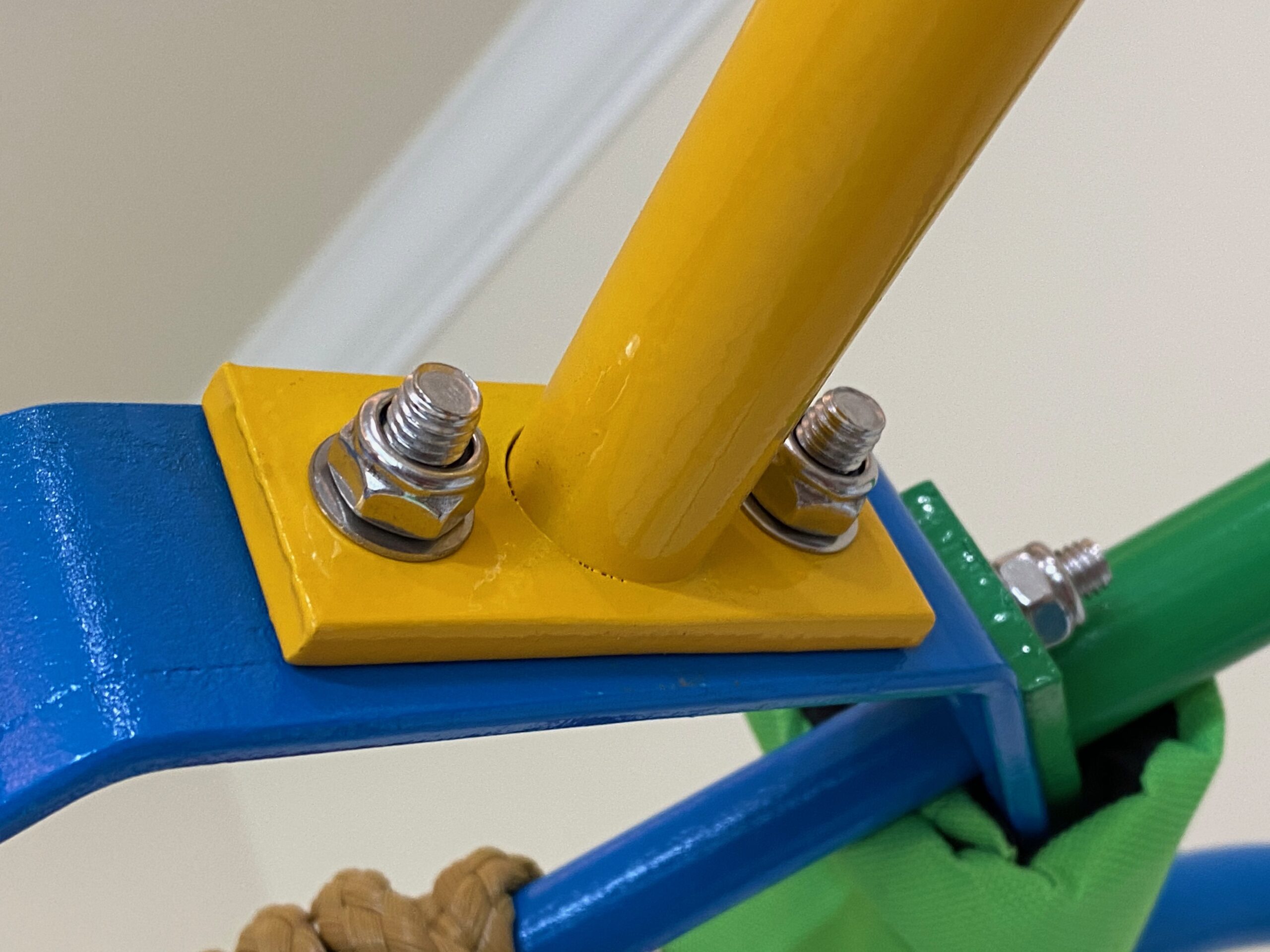
Never Miss an Important Article Again!
Join our Email List





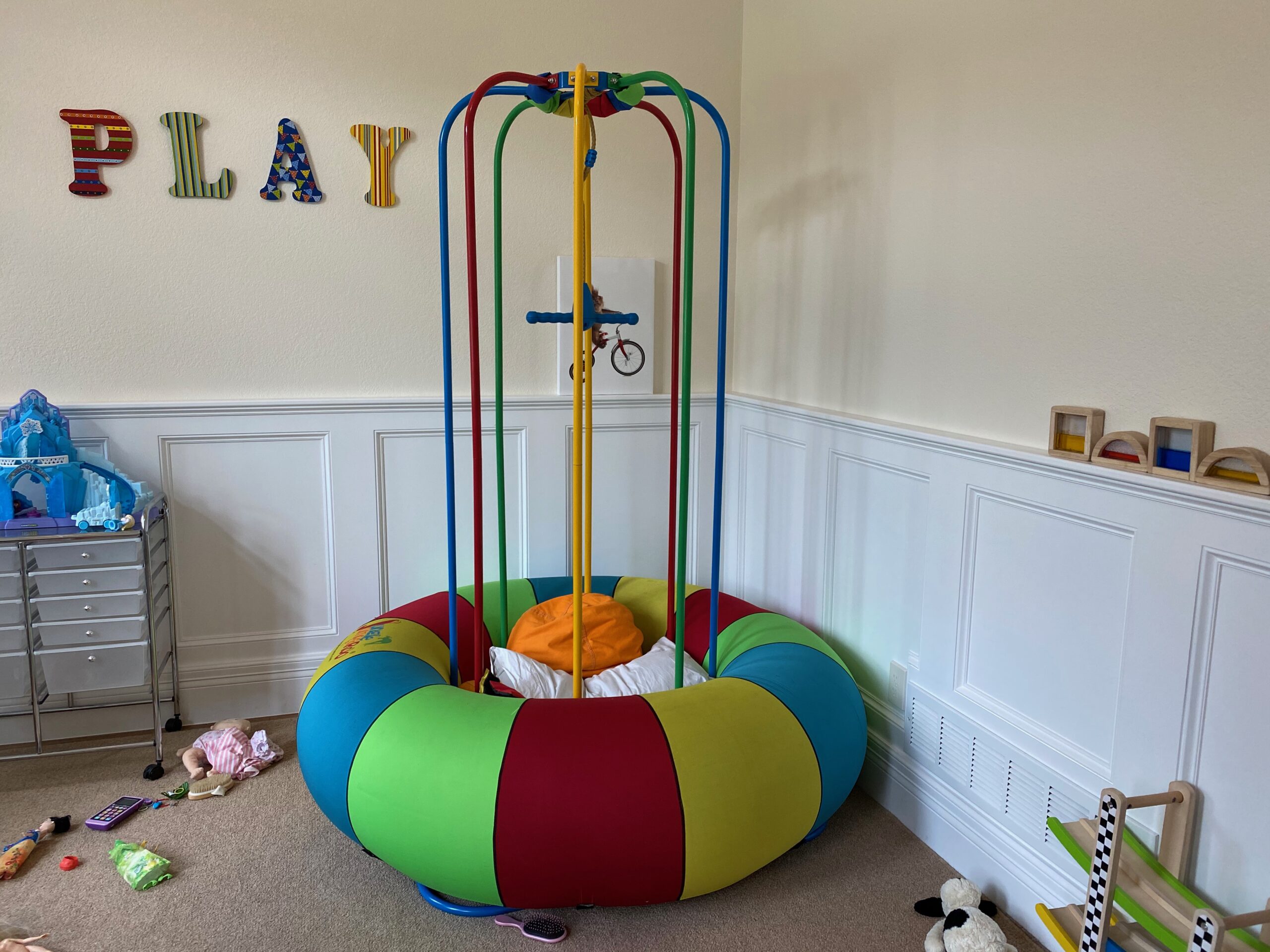
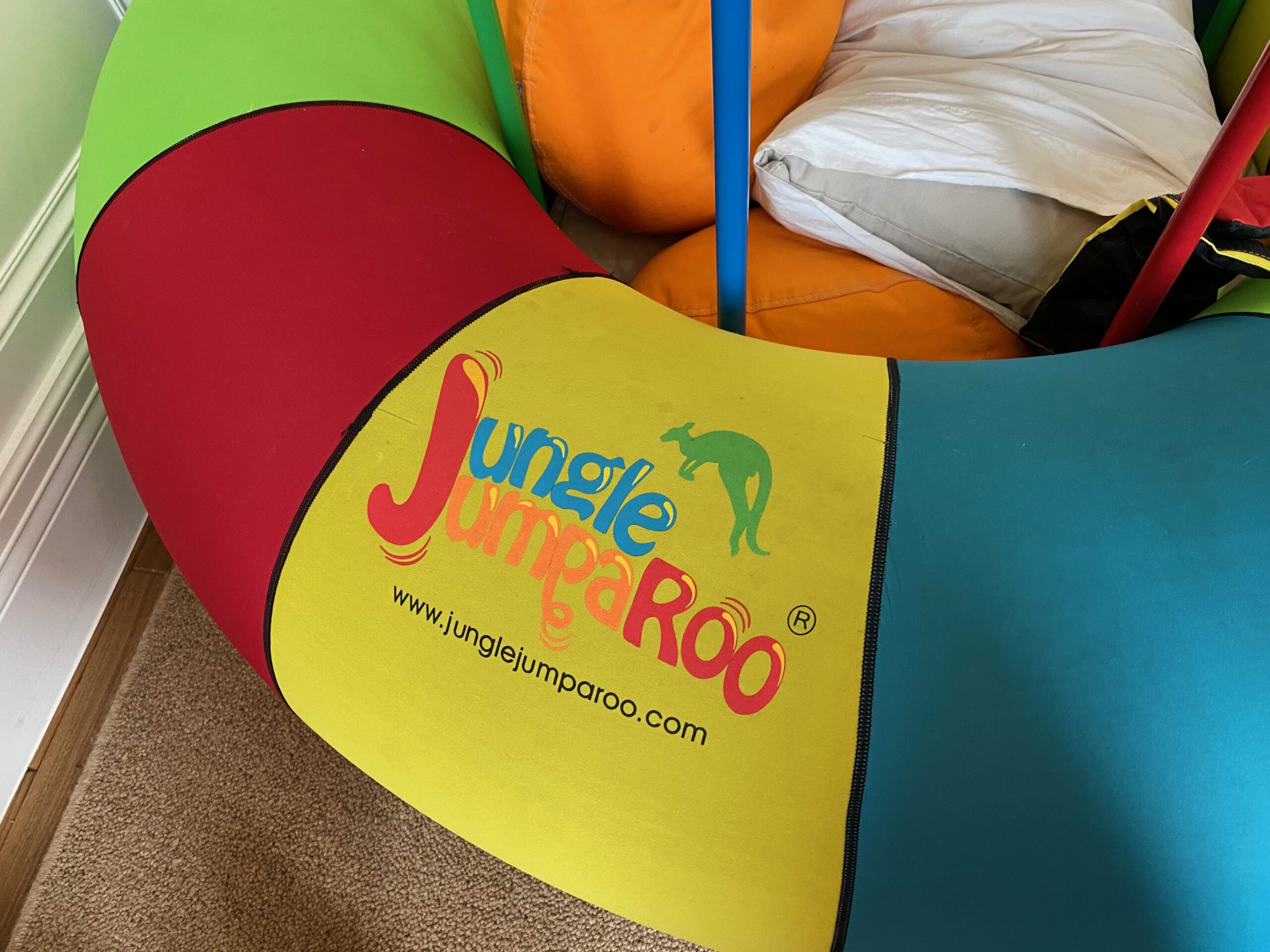

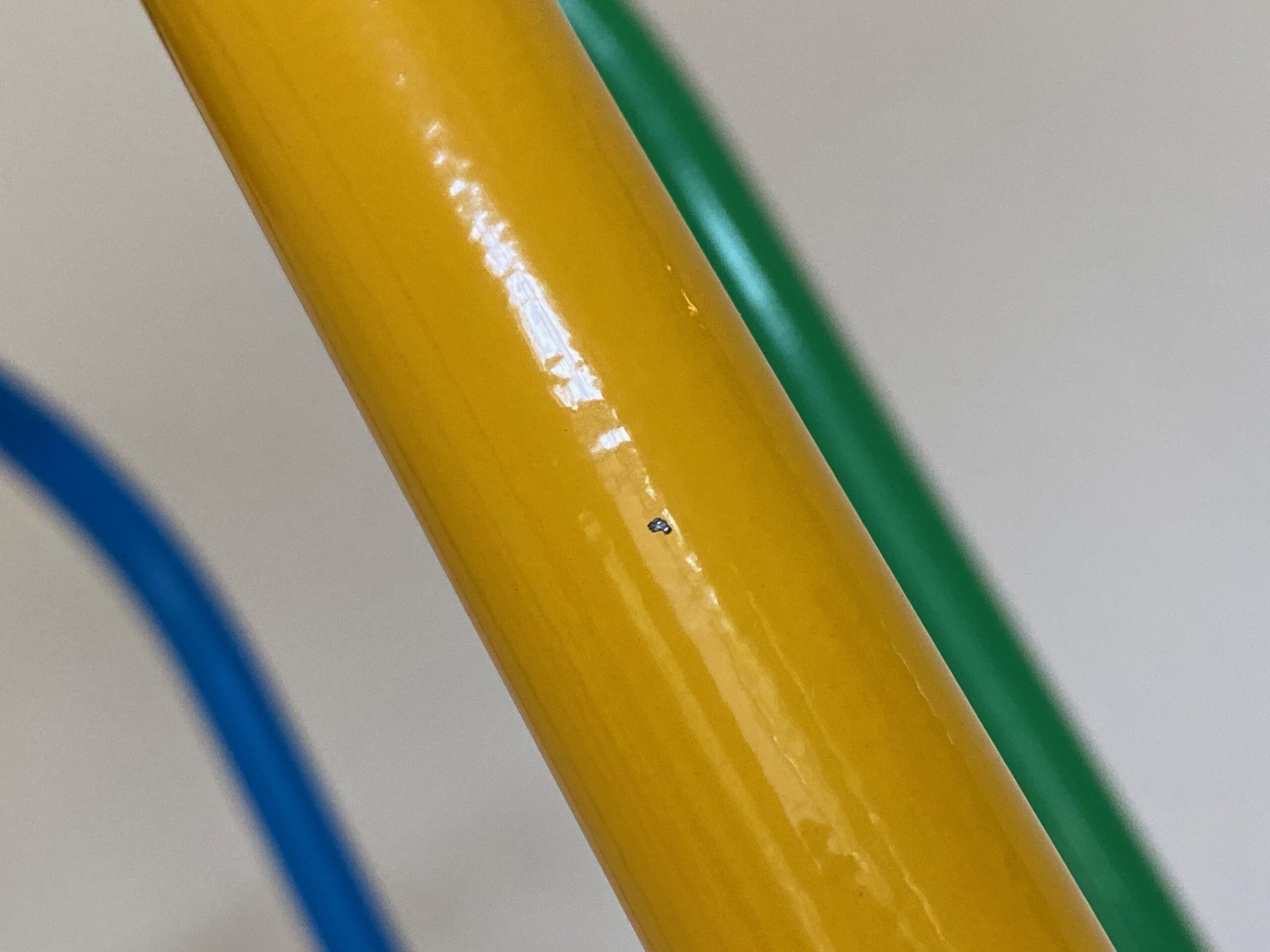
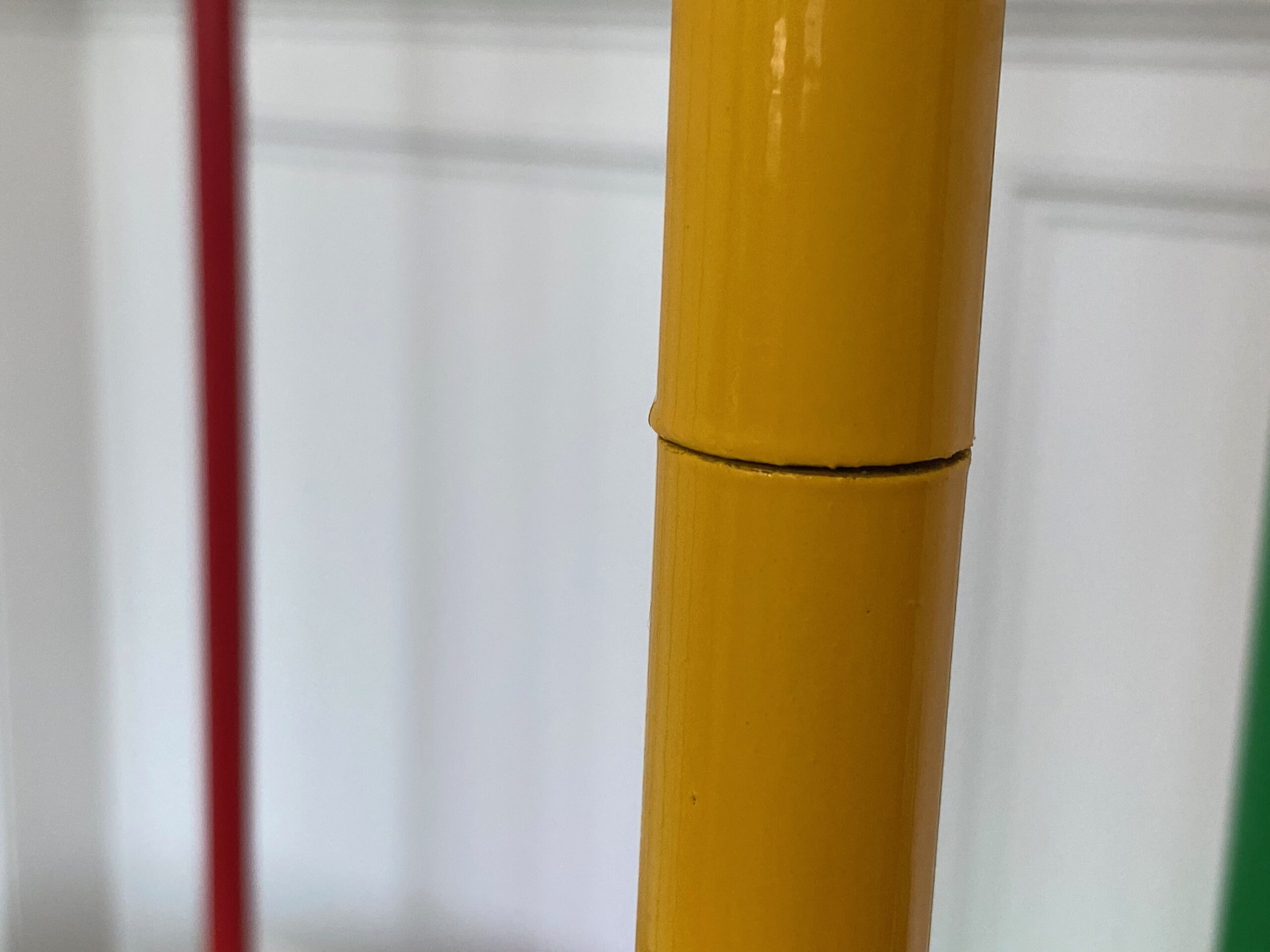
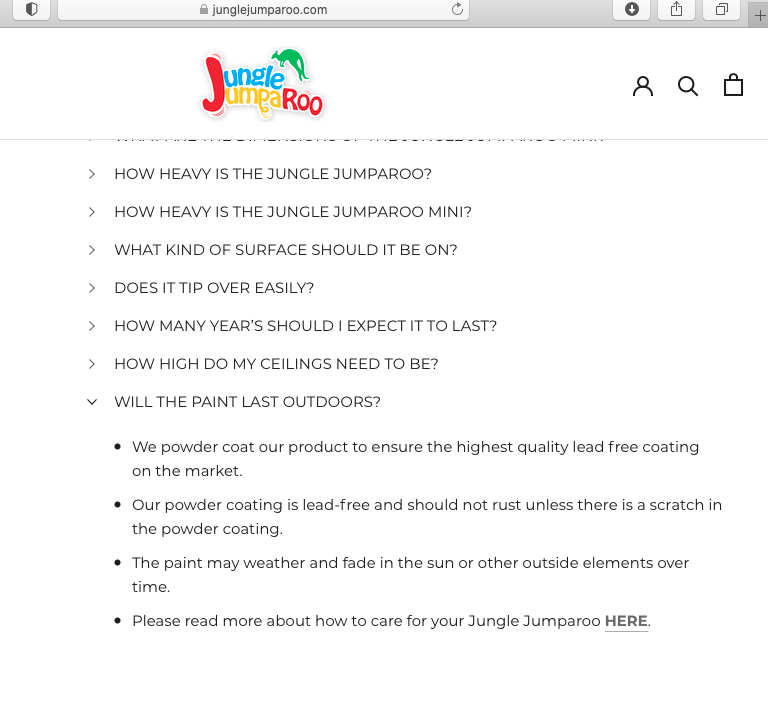
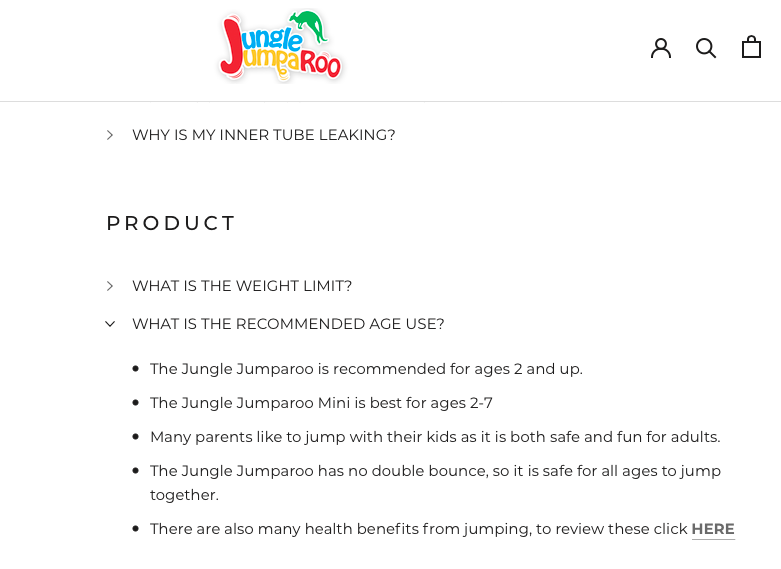
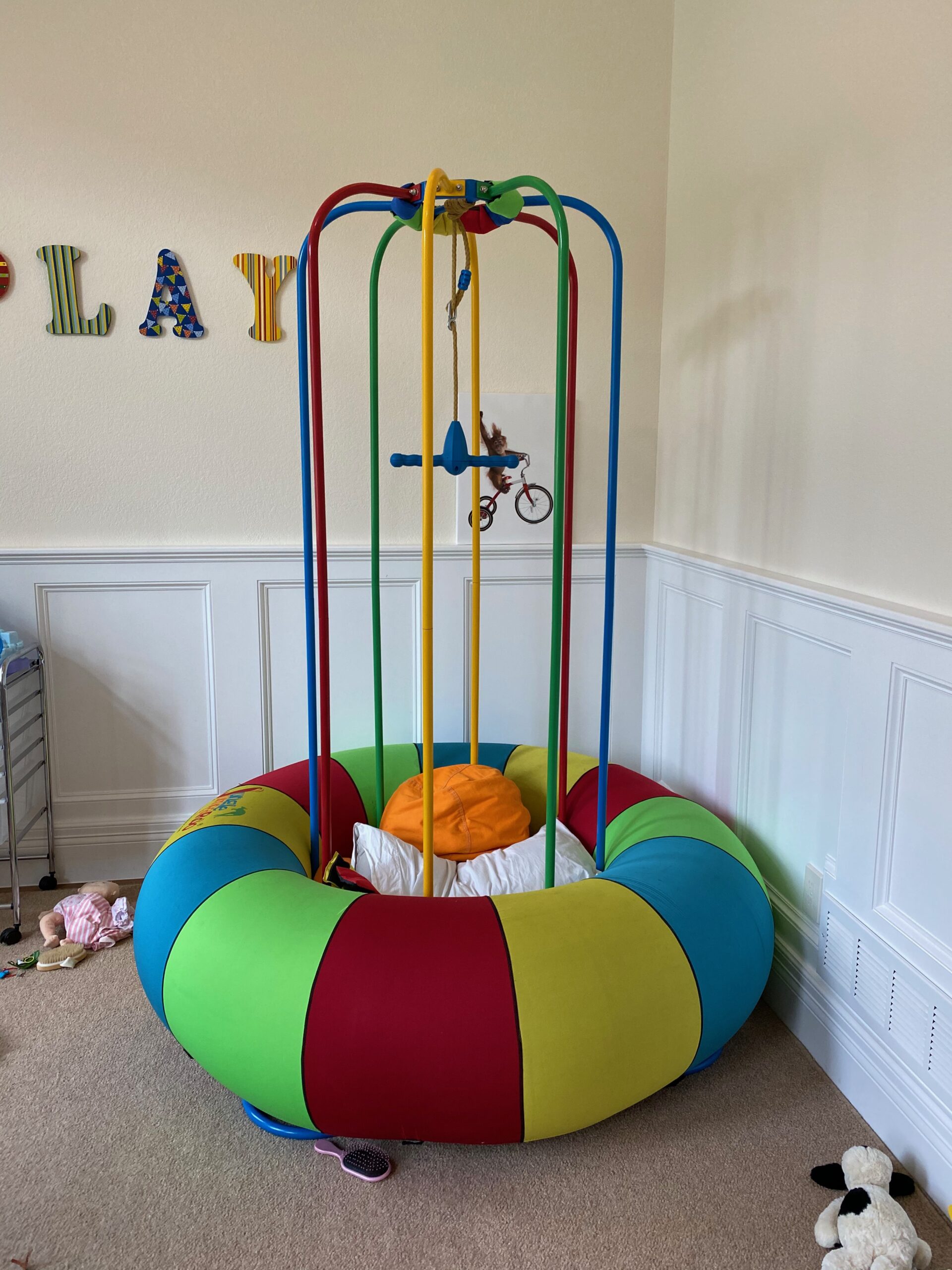

Well done Tamara. This is a significant and serious problem. I just wonder why you say that only an XRF scanner could be used by a lab to measure the lead content of paint chips. Wouldn’t a spectrometer work just as well as described here – https://www.who.int/ipcs/assessment/public_health/lead_paint.pdf. Sorry to be picky, but you would not want someone to not get a test because the lab did not own an XRF device.
Just another thought. Would you think it would be sufficient to tape over the yellow bar as a temporary measure until the manufacturers do a recall?
Best wishes.
Perhaps you have already had success. The product is ‘Currently unavailable’ on Amazon in US and UK. Well done! Pity it looks like a fun toy.
Tamara, I am SO upset to see this. We LOVE our Jumperoo and the kids use it daily. I believe we purchased ours in 2016. We have chipping and it has been well used indoors. I’m sick about this. We are in Portland. Any chance you want to test it? What a huge disappointment if it does in fact contain lead!
The cpsc has posted a recalled for this toy now. https://www.cpsc.gov/Recalls/2022/Jungle-Jumparoo-Recalls-Childrens-Toys-Due-to-Violation-of-the-Federal-Lead-Content-Ban-Recall-Alert
Yay! Progress!
Hi my sister purchased our in Dec 2018 and then she called me telling me how they had been recalled so I got rid of our right away I had my kids tested for lead poisoning. I lost my daughter last year to sids so I take all these recalls super serious I couldn’t imagine losing another child especially if I could prevent it
Thank you for sharing your story. I am so sorry for your loss.
Tamara